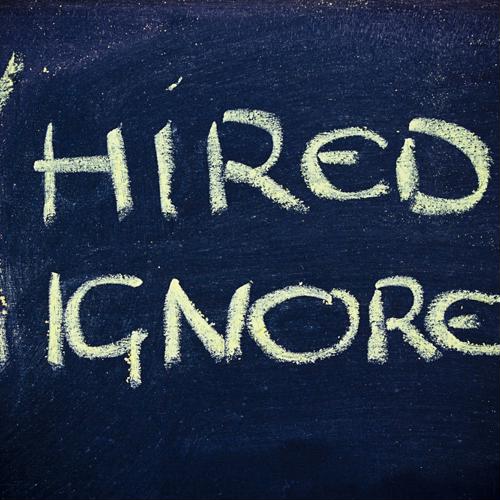Tips for turning down a job applicant

Nobody likes getting turned down; whether you’re on the giving or receiving end of rejection, it can leave you feeling uncomfortable, hurt and unsure. Unfortunately, rejection is an inevitable piece of the hiring process, and as a human resources professional, you won’t be able to hire every single person you interview.
But that doesn’t mean the letdown has to be a long and agonizing process for you and candidates involved. It’s important to handle the situation in the most professional and proper way possible, as it can benefit you, the candidate and your company in the long run.
“Yes, taking the time to send a candidate rejection letter/email is an added extra to your workload, but taking the time to officially notify a candidate about your employment decisions is a big plus point in your favour, and an extremely positive step you can take to ensure you build good will and establish either yourself or the company you work for, as a recruiter/employer of choice,” Siofra Pratt wrote for Social Talent. “In fact, if you do it well, you can foster relationships you would consider for future roles, bolster your employer brand, and boost sales.”
Turning down a job applicant doesn’t have to be a hard and excruciating task on your list of things to do. Here are a few tips for handing out rejection:
Don’t leave your candidates hanging
If you have a clear idea that the interviewee isn’t going to fit the bill, don’t wait until you’ve gone through the entire recruitment process with other candidates to let him or her know the news. Let the unfit candidate know that they’re not in the running for the job as soon as possible. This shows that you’re respectful of his or her time, as your company is likely not the only employer that sparked his or her interest during the job search. Just like ending a relationship, candidates will seek closure from you so that they can move on and continue looking for a position elsewhere. Be respectful of this.
“Refrain from having a lengthy discussion.”
Be smart about the conversation
Beating around the bush and starting the rejection call with a chatty conversation isn’t going to end well. Refrain from having a lengthy discussion and just get straight to the point. Let the candidate know that he or she didn’t get the position, along with the reason why. You may also explain why you went with another candidate – perhaps this individual had more experience in the field or met a different credential that set him or her apart from the other candidates. Give this information to the candidate you are rejecting so he or she can learn from it, not dwell and wonder why he or she didn’t get picked in the first place.
Represent your company well
While it might be difficult to reject the candidate, it’s always important to remember that professionalism is key, and you’re representing your entire company throughout the discussion. As stated by The Balance, it’s critical to talk to each applicant so that they leave the conversation with a positive attitude toward your organization. Making the right impression will impact how the candidate discusses his or her experience to friends and family, who could become potential candidates or clients in the future.
At the end of the day, it’s always important to consider the candidate’s feelings. Be respectful and treat him or her as if you were the one being rejected. With these tips, we hope you find it easier to get through the process of turning candidates down when they don’t fit the job description.
